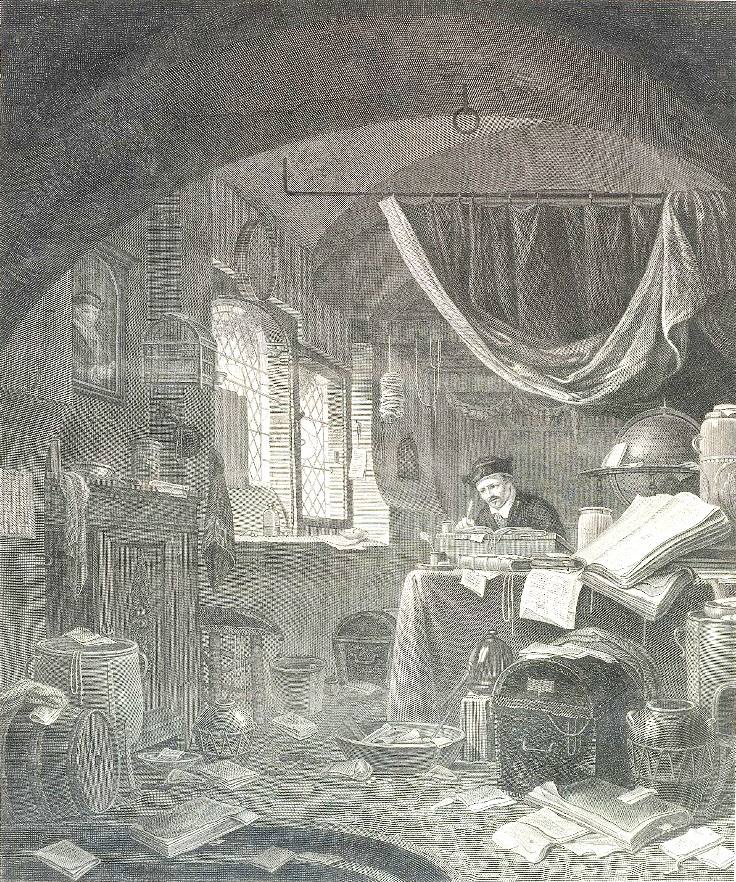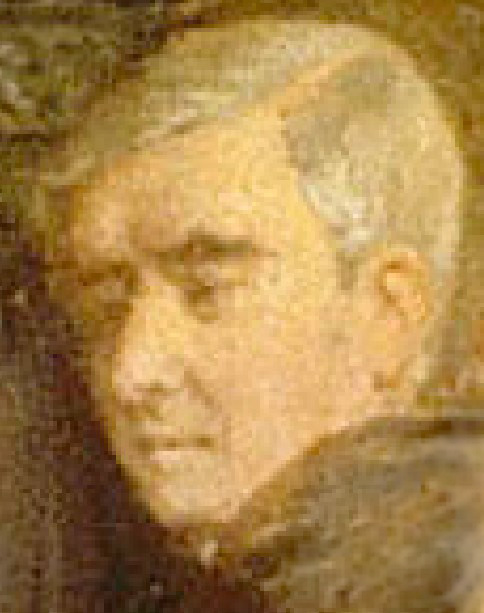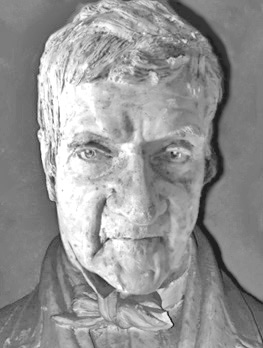Victor-André-Louis Texier (1777 - 1864), master engraver, painter
1st image: Soirée; 2nd: bust by Hebert (1865); 3rd: Texier depicted with ‘his’ Venus of Milo, by Eugène Giraud, drawn late 1853 or early 1854 at Nieuwerkerke's soirée.
Victor Texier, in his mid-seventies at the time of this painting, was among the eldest figures depicted. Though he led a discreet life —free from scandal or notoriety— his contributions to French art presentation in the first half of the 19th century were monumental.
Before the advent of printed reproductions, art publications relied entirely on engravings. Texier (sometimes spelled Tessier) was widely regarded as the finest engraver in France. Initially trained by his father, a wood engraver, Victor began designing engravings in the 1790s. At the turn of the century, he studied under the internationally renowned Francesco Piranesi.
By the early 1820s, Texier embarked on his life’s work: a faithful visual catalog of antique artworks housed in the Royal Museum, including the Venus of Milo, discovered in 1820. The ambitious inventory —one of the world’s largest art publications of its time— was initiated by Count Quirino Visconti (father of Louis Visconti09) and continued under Count de Clarac, with whom Texier had family ties, from 1818 until Clarac’s death in 1847.
Following the Louvre’s reorganization under conservator Longpérier37 in 1848, Texier —despite the added workload— persevered to complete the project by 1853.
His lifetime achievement included over 3,000 meticulously engraved reproductions of museum artworks.
A master engraver and doyen of the Louvre’s engraving department, Texier was naturally invited to join de Nieuwerkerke's16 vendredi-soirées: artists depended on him for reproductions of their works.
At the age of eighty-seven, tragedy struck when Texier was run over by a horse-drawn carriage outside his home on Rue Honoré. He succumbed to his injuries two days later. De Nieuwerkerke honored his legacy by attending his funeral at the Clarac family tomb in Montmartre Cemetery.
Note: Texier’s name is absent from recently discovered documents. None of the suggested individuals in these sources correspond to this figure, reinforcing Texier as the most logical candidate. His attendance at a vendredi-soirée is verified by Eugène Giraud's11 caricature.


